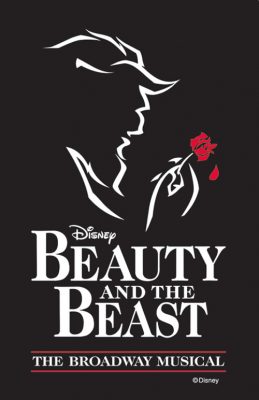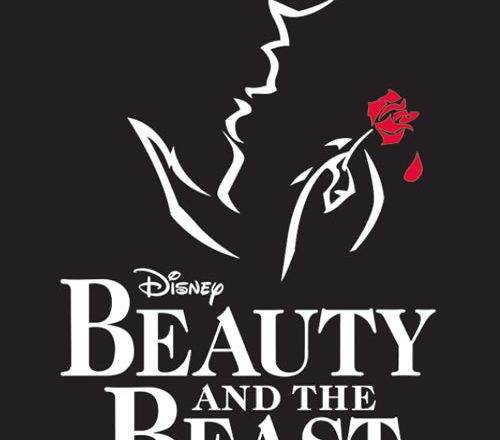Disney History: Beauty and the Beast premiered on Broadway April 18, 1994
 It’s hard to ever think of Disney as an underdog, but Beauty and the Beast fought massive odds. It faced a record-setting budget, a new crew, a possible boycott, and underwhelming critical reviews, en route to becoming one of the most successful musicals of all-time, running in NYC until 2007.
It’s hard to ever think of Disney as an underdog, but Beauty and the Beast fought massive odds. It faced a record-setting budget, a new crew, a possible boycott, and underwhelming critical reviews, en route to becoming one of the most successful musicals of all-time, running in NYC until 2007.
On April 18, 1994, the show premiered on Broadway. Here’s 25 facts to celebrate the 25 years since its debut.
1 • The live entertainment executive for Disney Parks was the first to suggest a Broadway show: Six months before the premiere of movie, a screening was held for roughly 50 executives. The senior vice-president for live entertainment at the Disney Parks, Ron Logan, told Jeffrey Katzenberg “If you ever want to go to Broadway, this vehicle would be perfect.” Katzenberg dismissed it, according to the Orlando Sentinel, “I’m not sure that’s a business we should get into.”
2 • Beauty was the top Broadway musical of… 1991?: Frank Rich, an influential The New York Times theatre critic, declared the animated film as Broadway’s best musical of 1991. The review is credited with sparking Michael Eisner’s interest in the project. Unfortunately for Disney, he wasn’t the live show’s opening night reviewer.
3 • Ron Logan got a promotion for the idea: As the executive who suggested heading to Broadway, Logan was made the President of Walt Disney Theatrical Productions Ltd. It was a risk hiring someone with no New York theatre experience, but the Orlando Sentinel noted that when Logan “became the music director at Disney World 16 years ago, the shows often were little more than a ploy to lure people away from attractions and reduce lines.” Using a director, a choreographer, and a set designer from the parks “whose other major credits were Place Crazy and Dick Tracy” shows for Disney World received repeated criticism from newspapers.
4 • Chip and a floating rose sold the show: Logan’s presentation to the Disney executives included a curtain raised to reveal a floating rose, and another curtain raised to reveal “Chip.”
5 • Linda Woolverton got to write the musical: Beauty and the Beast’s screenwriter was given the opportunity to expand on her own story, writing the “book” of the musical.
6 • Seven new songs: The production added seven new songs to Alan Menken and Howard Ashman’s existing soundtrack. Lyricist Tim Rice was brought in to replace the late Ashman.
7 • A crowd of performers: The production called for a cast of 38 actors, all with microphones. They were joined in NYC by 26 musicians.
8 • Houston saw it first: The musical had a seven-week tryout in Houston, Texas.
9 • Scalpers loved the test run: They resold $40 tickets for the Houston show for $250.
10 • The Beast had plastic surgery: The Beast’s prosthetic makeup in Houston looked like the muzzle in the movie. Makeup designer John Dods said that this mix of latex and fur made it tough for actor Terrence Mann to sing. The final costume took an hour and a half to put on, and the latex makeup wasn’t reusable.
11 • Beauty and the Beast had a subtitle: On Broadway, the official name of the production was “Beauty and the Beast: A New Musical.”
12 • Beauty part of a shift to the spectacular: Disney coming to Broadway was inevitable, wrote The Wall Street Journal, as “Broadway had been moving inexorably toward the fantastic and spectacular.” Reviewer Edwin Wilson cited the characters of Cats, the falling chandelier in The Phantom of the Opera, and the descending helicopter effect in Miss Saigon. “’Phantom,’ in fact, has the same story as ‘Beauty and the Beast’: An ugly or misshapen man seeking love pursues an innocent maiden who is at first repulsed by him but then succumbs to his strange appeal,” suggested Wilson.
13 • Production estimates varied: Outlets quoted anything from $11.9 to $19 million dollars to produce, $20.4 to $32.6 million today. Michael Eisner would only tell The New York Times that “the show costs less than $12 million.” He refused to comment further, saying that he wanted the show to be reviewed, not its budget. Perhaps because of the budget, an anonymous employee told The New York Times that Disney chairman Jeffrey Katzenberg’s management style was suffocating. The production team couldn’t make changes without his approval.
14 • Very special effects: Among the 32 special effects in the show is a fireball that the Enchantress throws at the Prince, to turn him into the Beast. The fireball was patented by Disney, having taken a year to develop.
15 • Previews began a month before the premiere: Before the opening night, previews began on March 9.
16 • Ticket sales were strong: The show’s previews were at 98.8% capacity, pulling in $664,043 in one week, according to Variety.
17 • “Mr. C.” was Belle’s dad: Happy Days favourite Tom Bosley originated the role of Maurice.
18 • Tickets were $20 to $65: With inflation, that’s $34 to $111.49. One newspaper questioned whether there’d be a market, as the top ticket to Disney on Ice’s Beauty and the Beast cost $25 ($43 after inflation). In comparison, the best seats in The Lion King on April 27, are going for $239 today.
19 • Advance sales were low: It’s hard to imagine this now, but advance sales for the show were low by Broadway standards, a “mere” $6 million, $10.2 million after inflation. One of the flops of 1993, The Goodbye Girl, had $10 million in advance sales. Another Broadway company wasn’t concerned with Disney’s low-key approach: “the plan is to let the show make itself an event.”
20 • A beautiful boutique: Bloomingdale’s opened a Beauty and the Beast: A New Musical boutique on April 4.
21 • Reviewers weren’t kind: The New York Times ran two reviews, the usual column the day after an opening and another on the weekend. David Richards praised the costumes, set pieces, and effects, but complained that while “the astonishments rarely cease… nothing has been left to the imagination… There is no room for dreaming, no quiet tucked-away moment that might encourage a poetic thought.” The second reviewer felt the movie’s spirit was unable to emerge from the stage show. “It’s wearing concrete boots inside the monster body of the Disney organization’s idea of what a Broadway musical should be: relentlessly bland, busy, upbeat and robotlike.” The new songs’ “only apparent purpose,” the critic felt, was “to pad out the show so that it overlaps with your bedtime, no matter how old you are.” The Wall Street Journal said that “the scenery… could hardly be called tasteful or imaginative. Belle’s home… looks like something out of a stock-company production of Hansel and Gretel.” The Times also snarked that “there’s not a spontaneous moment… You might well suspect that if the world ended tomorrow, the show’s internal mechanism would go right on ticking in the void until its batteries ran down.” The Orlando Sentinel even complained that Terrence Mann wasn’t doing the Beast’s bellowing roars himself.
22 • Belle would have loved the cast party: Following the show’s opening night, a cast party was held at a branch of the New York Public Library.
23. What about Mary Poppins? Even before opening night, Logan told the Orlando Sentinel that he was considering adapting Mary Poppins, The Little Mermaid, or Aladdin. Eisner confirmed to The New York Times that Poppins had been discussed, but nothing had been decided.
24 • On the road: Before opening night, Michael Eisner was already talking about a tour, “companies of the show in Tokyo and Toronto,” and licensing the production to schools.
25 • Disney helped revive 42nd Street: Revitalization plans for 42nd Street were bandied about, starting in the late-1970s, according to Theatre Craft International. The publication described the street as a “once-glorious Broadway theatre thoroughfare-turned-tawdry-porno-strip… perhaps the sleaziest strip in Manhattan.” In February 1994, Disney committed to a $29 million dollar renovation of the New Amsterdam Theatre, receiving a low-interest loan from the City for much of that cost. (That’s $49.7 million after inflation.) Three existing Broadway theatre owners were outraged, and failed at organizing a boycott by the theatrical unions. The New Amsterdam Theatre was the first Art Nouveau structure in the United States. The home of The Ziegfeld Follies for fourteen years, the New Amsterdam’s last live show was in 1937.
References • Points 1, 2, 3, 4, 8, 9, 11, 22, 23: Craig Dezern, “Idea of play was a Beauty”, Orlando Sentinel, 18 April 1994, D1. • Points 7, 10, 13, 14, 18, 19, 20, 23, 24, 25: Alex Witchel, “Is Disney the Newest Broadway Baby?”, The New York Times, 17 April 1994, A1. • Point 10, 16: “Pro had ‘Beast’-ly job designing a ‘Beauty’ of a show”, The Spectator (Hamilton), 20 April 1994, C7. • Point 18, 21: Elizabeth Maupin, “Production squanders the passion”, Orlando Sentinel, 18 April 1994, D1. • Point 3: Patrick Pacheo, “Disney’s Broadway gamble”, Newsday, 10 April 1994, 16. • Point 12: Edwin Wilson, “A bit of Disneyland comes to Broadway”, Wall Street Journal, 19 April 1994, A18. • Point 21: David Richards, “Beauty and the Beast: Disney does Broadway, dancing spoons and all”, New York Times, 19 April 1994, C15. Vincent Canby, “Is Broadway ready for a Disney World show?”, New York Times, 24 April 1994, A5.


